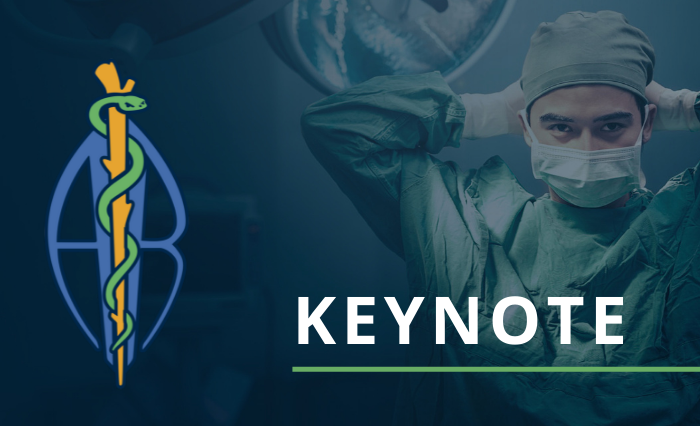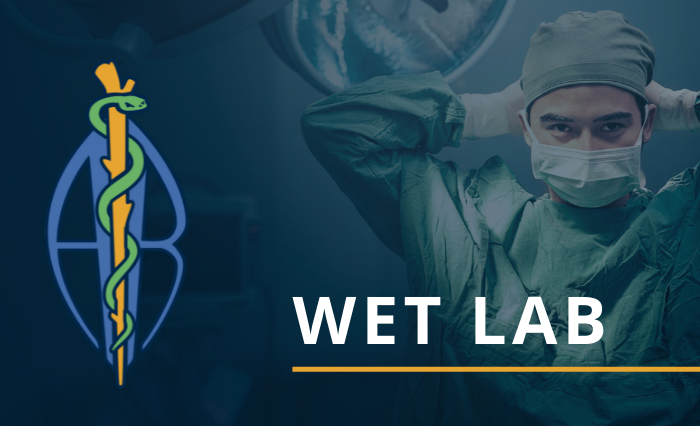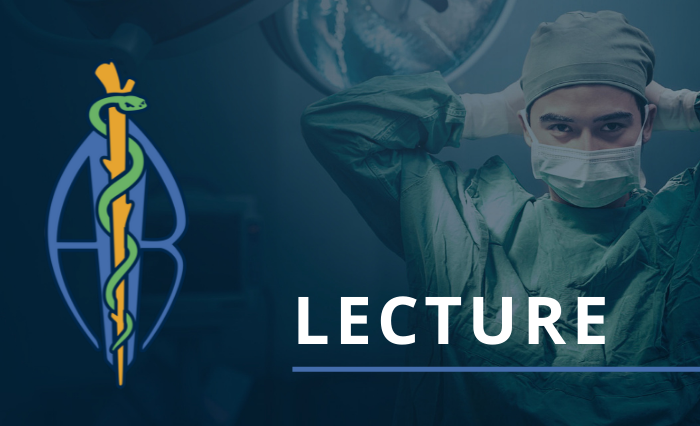The Sheep as a Model for Assessing Long Term Functional Patency and Maintenance of Arteriovenous Grafts

Date: Wednesday, October 11, 2023
Time: 11:30 am CTDuration: 30 MinutesRoom: Cumberland Ballroom, Salon ABCD
Speaker – John Carney
University of Minnesota
Patients with end stage renal disease often require vascular grafts to create arteriovenous (AV) shunts for hemodialysis access. However, graft complications frequently occur resulting in loss of functional patency and need for subsequent interventions. Although sheep have been used to evaluate preclinical graft safety, research lacks regarding use for prolonged graft maintenance and postoperative interventions. We sought to validate the sheep model in evaluating chronic AV graft patency and salvage techniques using clinically established approaches.
Methods:
Methods: Three (n = 3) adult sheep weighing 88 ± 21kg and 14 ± 1 months old were anesthetized. An AV shunt between the left carotid artery and right jugular vein was created using a clinically available 6mm Gore-Tex Vascular Graft. Postoperatively, grafts were serially assessed by venipuncture every 2 weeks and ultrasound monthly. In cases of reduced functional patency, animals were anesthetized for restoration of patency using interventional techniques and recovered. Six months following implant, animals were euthanized followed by a comprehensive gross necropsy.
Results:
Results: AV shunts were successfully created in all study animals. Postoperatively, all animals required interventions to restore functional patency: 3 months (n=1), two months (n=2). One required a second intervention at 5 months. Interventions consisted of balloon angioplasty and percutaneous placement of a 6mm Gore Viabahn Endoprosthesis. All animals survived to endpoint (6 months). Grafts grossly appeared healed and functionally patent.
Conclusion:
Conclusions: The sheep model can be used for evaluating long-term maintenance of AV grafts using clinically available techniques, as well as the efficacy and safety of salvage procedures for restoring functional patency. Preclinical translational AV shunt graft studies should consider assessing long-term graft performance and interventional procedures in addition to standard safety and biocompatibility testing.
Additional Authors: W. Tollison, E. Lilkequist, C. Haugo, M. Lahti, J. Schappa Faustich, R. Bianco
This is an archived event. Please log in with your member account to access these resources.
Similar Events Happening
Morning Wet Lab – Vanderbilt University
Time: 8:00 am
Basic swine laparoscopy and endovascular interventions paired with an introduction to stereotaxic, intrathecal surgery, and vascular catheterization in the rat
Afternoon Wet Lab – Vanderbilt University
Time: 12:00 pm
Intermediate swine procedures and rat microsurgery and catheterization techniques
Automated Blood Sampling in a Telemetry Cardiovascular Dog Colony
Time: 10:30 am
Speaker – Amanda Wilsey Abbvie Implementation of Automated Blood Sampling (ABS) allows for uninterrupted cardiovascular data collection with simultaneous blood collection throughout a telemetry dog preclinical study. This reduction shortens study timelines, minimizes CV data artifacts, and considerably reduces compound synthesis and the associated costs. Methods: A colony of telemetry instrumented male beagle dogs were implanted and maintained in-house for non-GLP preclinical cardiovascular safety studies. Evaluation of the ABS telemetry dog cardiovascular model; highlighting the benefits and downfalls of the last seven years since implementing Automated Blood Sampling. Results: Since 2016, telemetry dogs implanted with transmitters and vascular access ports […]
Evaluation of an African Green Monkey Model of Transient Ischemia
Time: 11:00 am
Speaker – Kimicia Isaac, St. Kitts Biomedical Research Foundation / Virscio, Inc. The NIH estimates 800,000 Americans suffer strokes yearly, with significant mortality, long-term disability, and substantial unmet medical need. The lack of translation from small animal models to clinical efficacy has slowed therapeutic development. Nonhuman primates (NHP) share anatomy and physiology with humans important to the clinical pathophysiology of stroke and truly predictive preclinical modeling. An model of transient ischemia is described in adult male African green monkeys (Chlorocebus sabaeus) that promises to enable more robust evaluation of stroke therapeutics. Methods: 11 monkeys received a 180 min occlusion of […]
Practical Approach to Pain Management for Nonhuman Primates: Enhancing Welfare and Research Outcomes
Time: 1:00 pm
Speaker – Jan Bernal Amgen Pain management is a critical component of responsible animal research and care, particularly in the context of nonhuman primates (NHPs) utilized in biomedical and behavioral studies. This presentation aims to provide a comprehensive overview of practical pain management strategies for NHPs, with a focus on enhancing their welfare while optimizing research outcomes. The presentation will begin by defining pain and classifications of pain. It will emphasize the pain pathways and the multimodal approaches effective at each of the pain pathways, encompassing a wide range of medication and procedural options to modulate pain. Attendees will gain […]
The Vital Role of Capnography in Surgical Research: Enhancing Patient Care and Surgical Outcomes
Time: 1:30 pm
Speakers: Jan Bernal Amgen Amy Martunas Vertex Capnography has emerged as an indispensable tool in veterinary medicine, revolutionizing the way we monitor and manage patients during various surgical scenarios. This presentation is dedicated to shedding light on the fundamental principles, practical applications, and clinical benefits of capnography in veterinary practice. The presentation will commence by introducing the basic principles of capnography, elucidating the physiological underpinnings of carbon dioxide (CO2) measurement, and its significance in assessing both ventilatory and circulatory aspects of patient health. Attendees will gain insights into the mechanics of capnography, including the technology behind mainstream and side stream […]



